The evolution of poverty research in Bangladesh

It is striking that poverty is now such a well-understood phenomenon. Four decades ago, in the 1980s, there was hardly any basic work on poverty. Poverty reports of Bangladesh Bureau of Statistics (BBS) were usually three to four years late in publication. The analytical framework was also limited. But it was also a time of great intellectual ferment.
At BIDS then, and even earlier in the 1970s, debating development trends and seeking a better understanding of realities and trends on the ground was a passion for many of us. I particularly remember Mahabub Hossain, who passed away on January 3, 2016, as a role model for empathetic and committed scholarship, who always sought to put the spotlight on the often-ignored constituency of farmers.
Mahabub Hossain's room was next to mine at the Agargaon campus of Bangladesh Institute of Development Studies (BIDS). I had then come back to Bangladesh in 1986 after finishing my PhD at the University of Manchester. The World Bank at that time was focused on the so-called structural adjustment programmes and had little focus on poverty issues. There was a group among the donors who called themselves the Like-Minded Group—Denmark, Sweden, Norway, the Netherlands, and Canada. A colleague from the Danish embassy—Shireen Huq—got in touch with me and requested collaboration on developing a new framework for researching and understanding rural poverty. It was about adding some basic work on fundamental indexes used to measure poverty. Naila Kabeer worked with me on this.
Once we developed the concept paper, the Like-Minded Group of donors proposed to support a large-scale longitudinal research study on rural poverty to be implemented by BIDS. Mahabub Hossain had by then (1989) become the director-general of BIDS and actively encouraged the initiative. It was the largest research project of its kind at that time. Though Mahabub bhai was the DG, he agreed for me to be the project director, with himself, Omar H Chowdhury, Rushidan Islam, Binayak Sen, and Shamim Hamid as team members. The story of the Analysis of Poverty Trends (APT) project, based on a 62-village national sample, has resounding lessons for today's knowledge scene as Bangladesh looks to shape its post-July uprising future.
Foundational input for designing the research project came not only from the pre-project conceptual work supported by Danida but also from a post-flood countrywide tour in the wake of the devastating floods of 1987 and 1988. These inputs proved an invaluable resource when we launched the APT project at the end of 1989, recruiting at the time the largest team of fresh university graduates. The report of the study was eventually published as an international publication by SAGE Publications, with the title Rethinking Rural Poverty, with myself and Mahabub Hossain as editors and key contributors. The report became the basis for perhaps the first national-level poverty conference in 1992, which was inaugurated by none other than the then prime minister of the country, Begum Khaleda Zia, at the BIDS grounds.
Mahabub Hossain had by then left BIDS, but we continued the APT project with a smaller survey covering 18 villages in 1992 and 1993. The reports from these surveys, titled Rural Poverty Updates, were important inputs at the aid consortium meetings then annually held in Paris. Subsequently, we again did a repeat survey of 62 villages in 1995, from which another major volume and a policy brief under the title Dynamics of Rural Poverty were produced, which also proved influential in shaping the evolving poverty discourse.
This seminal research shaped policy thinking in multiple areas. Mahabub Hossain brought out the catalytic role of infrastructure—roads and electricity—as well as remittances in the process of poverty alleviation. I brought up the fundamental dimension of vulnerability in the poverty experience, putting the spotlight on the problem of monga (an extreme poverty pocket) and lumpy healthcare expenditures, which are now referred to as the out-of-pocket health expense burden. It was mine and Binayak Sen's early work on the differentiation between moderate and extreme poverty—highlighted in the Rural Poverty Updates produced from the APT project in the early 1990s—that began to bring into focus the separate problem of extreme poverty in Bangladesh. BRAC's founder, Abed bhai, told me on several occasions how useful he found our work for his own programming ideas.
A fellow traveller in this engaged knowledge journey was the visionary leader of the Local Government Engineering Department (LGED), the late engineer QI Siddique, with whom both Mahabub Hossain and I developed a deep and lasting bond. When we drew the curtain on the APT project in 1998 through an international conference on poverty, the venue was the LGED. Internationally famous economists and social scientists—Teodor Shanin, Amit Bhaduri, Nurul Islam, Mick Moore, among others—attended.
Though our institutional paths diverged—I established the Power and Participation Research Centre (PPRC) in 1996, and Mahabub Hossain served in a succession of international institutions, eventually coming home as the executive director of BRAC—our professional conversation never ceased. He was kind enough to be on the founding board of PPRC, and we separately continued the work on the 62-village framework. Our separate institutional paths did not sever the intellectual conversation on the dynamics of poverty. When, at PPRC, we became convinced of the need to address the issue of urban poverty and launched again a long-term research project with the support of the World Bank, one of the key people I was talking to was Mahabub Hossain.
I remember visiting Manila in the early 1990s for an ADB consultancy and made it a point to take a taxi to Los Baños to meet Mahabub bhai in his International Rice Research Institute abode. Our shared interest had a strong meeting point in field research to extract new insights from the field data. There were lighter—but no less significant—dimensions to our collaboration too. I was concerned with the ethical issue of how to recompense our survey respondents for the innumerable times we intruded into their lives, taking up three to four hours of their busy daily schedule for our research purposes. The APT team came up with the idea of recompensing not the individual but the community and launched a programme called micro-level community-oriented schemes. Somehow, we improvised to extract some funds from our research budget for these schemes. One of these schemes was a passenger shed for bus passengers in Mujib Nagar village of Meherpur district, which local people had requested from us during our research visit to the village. It was perhaps the only time when two national personalities—Mahabub Hossain, the BIDS DG, and Professor Rehman Sobhan, the BIDS mentor—agreed to join me to make the arduous field trip to inaugurate a humble bus passenger shed in the distant border of Bangladesh.
I miss this camaraderie, this thirst for knowledge as adventure, this urge to converse and connect, this quest to illuminate in the hope of doing good that is even more needed now as Bangladesh strives to craft its new journey of inclusivity, justice, empathy, and prosperity.
Hossain Zillur Rahman is an economist and political sociologist, and executive chairman of Power and Participation Research Centre (PPRC).
Views expressed in this article are the auhtor's own.
Follow The Daily Star Opinion on Facebook for the latest opinions, commentaries and analyses by experts and professionals. To contribute your article or letter to The Daily Star Opinion, see our guidelines for submission.

 For all latest news, follow The Daily Star's Google News channel.
For all latest news, follow The Daily Star's Google News channel. 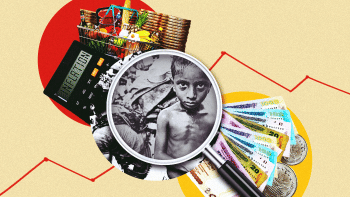
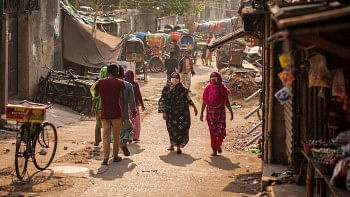


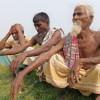
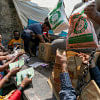


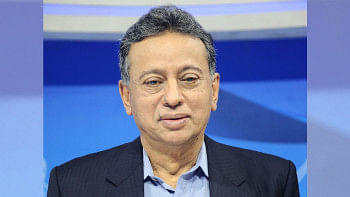
Comments